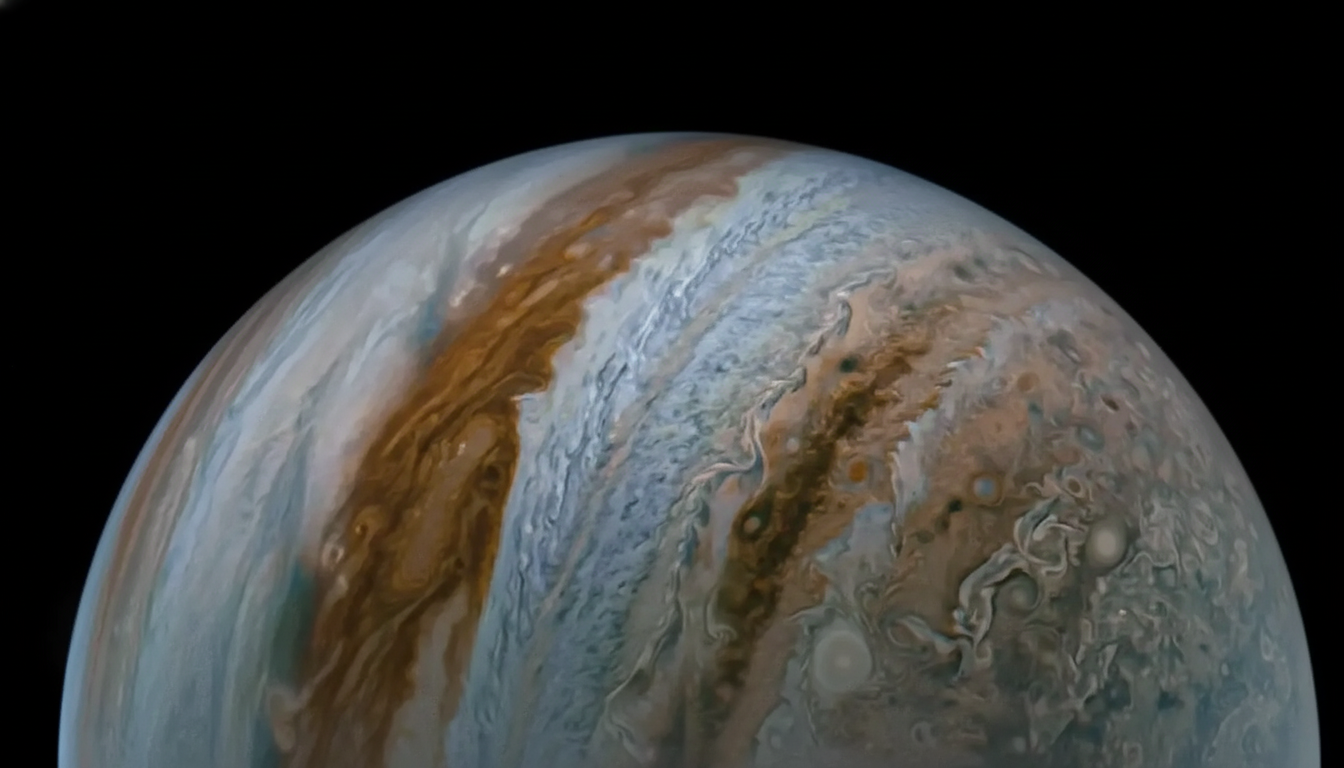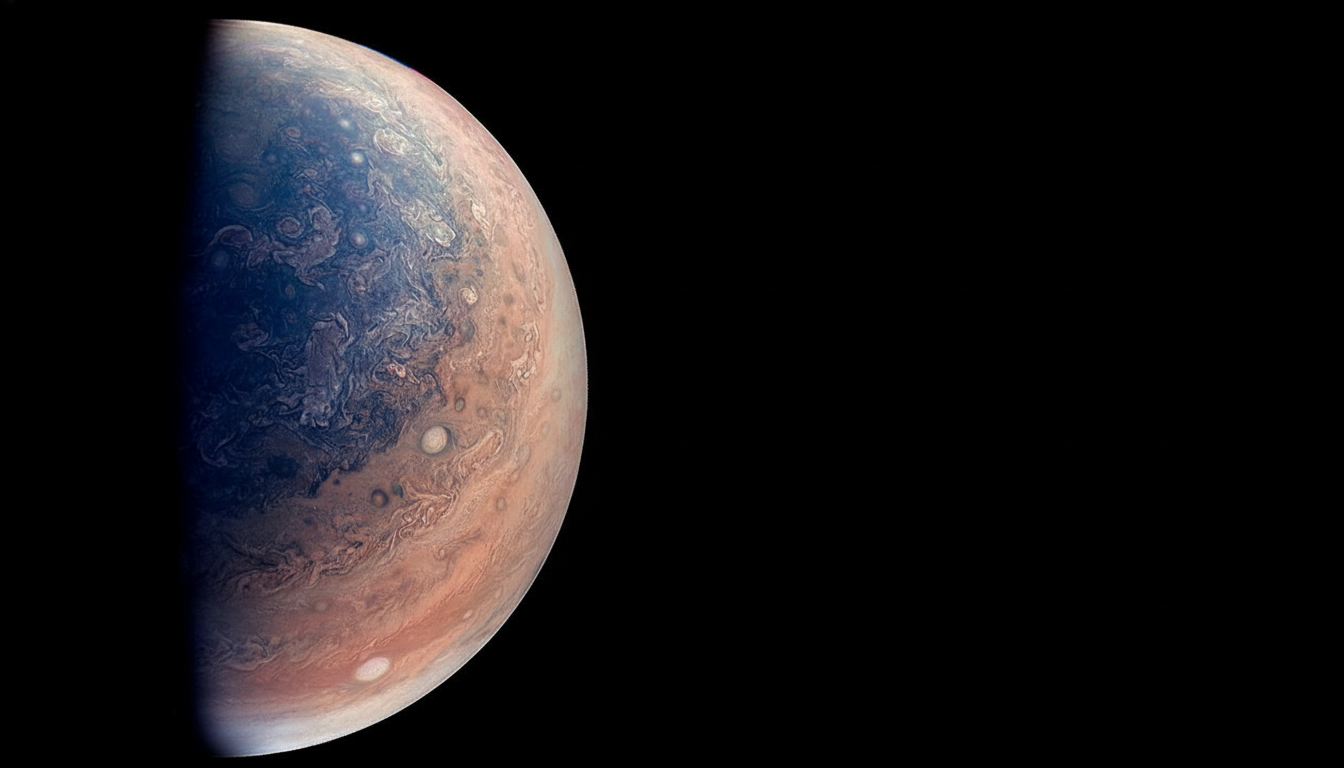The gargantuan gravity of Jupiter may have done more than shape the layout of the solar system. A new modeling study indicates that the gas giant was an early bloomer — and it reshuffled the solar system at just the right time, stopping a young Earth from careening toward the Sun and making way for conditions favorable to life on our planet to emerge.
With a combined planet-growth physics, dust dynamics, and asteroid formation in one model, the research team at Rice University found that as Jupiter rose up out of the gas disk, it produced pressure ridges in the gas disk. Those ridges trapped wandering dust, sparked a secondary wave of solid production and, importantly, halted the inward march of rocky worlds. The study is published in Science Advances.
- What the simulations reveal about Jupiter’s early impact
- Solving the meteorite age gap with Jupiter-driven dust traps
- Jupiter as guard and gatekeeper of the early inner solar system
- Clues in other star systems that mirror our solar system’s past
- Implications for habitability across planetary systems like ours

What the simulations reveal about Jupiter’s early impact
In the violent first few million years, protoplanetary disks shunt gas and dust all over. The models suggest that as Jupiter bulked up (to a certain point, eventually amassing a core-and-envelope so massive it could carve itself a partial gap), it slurped gas away from the inner disk and raised pressure bumps that worked like cosmic fences. Dust grains also accumulated at these fences instead of swirling into the Sun.
These “dust traps,” when reproduced in the simulations, naturally produce ring-like reservoirs where new solids can form late, a long time after the earliest clumps of refractory condensates set.
For the first time, these three processes — Jupiter’s growth, dust transport, and asteroid assembly — were combined into one framework.
Solving the meteorite age gap with Jupiter-driven dust traps
Clues come from meteorites. Some of the first solids, like calcium-aluminum-rich inclusions, formed virtually instantaneously in the solar system’s initial million years. But the principal components of many stony meteorites — chondrules — seem to peak 2–3 million years later. That difference in age has left cosmochemists scratching their heads for decades.
Laboratories have dated these components with impressive precision using isotopic clocks like Pb−Pb and Rb−Sr chronometers. The new study demonstrates that Jupiter-induced dust traps could account for how enough material survived to form that second generation of solids in time. The timing matches that of the most common type of stony meteorites found on Earth, ordinary chondrites.
Jupiter as guard and gatekeeper of the early inner solar system
Jupiter’s dual role emerges clearly. More than twice the total mass of all other planets combined (and 318 times that of Earth), it gravitationally reshaped the disk, preventing material from mingling between its outer and inner stretches. This bottleneck stunted the growth of Earth, Venus, and Mars by preventing all the inflow from reaching them from the outer disk, but it also kept them in stable, livable orbits.
The models suggest Jupiter would have to have formed very early in the system’s evolution, within 2 million years, to make such a strong mark on the disk. That early Jupiter would have changed the torques that lead to “type I” migration, which is what forces young rocky planets inward. Lacking that counterbalance, a proto-Earth might have slipped sunward, overheating and forfeiting its opportunity for prolonged surface water.

Clues in other star systems that mirror our solar system’s past
Observations carried out with the Atacama Large Millimeter/submillimeter Array have imaged dramatic rings and gaps in young disks, such as those around stars like HL Tau or TW Hydrae. Planet–disk interactions are the most favored theory for these features. The Rice team’s findings indicate that the formation of rings could have occurred in our solar system at around the time when Jupiter was forming, and left a trace behind that can still be found in meteorites.
This interpretation also jibes well with an increasing body of work that portrays giant planets as early city planners. Scientists analyzed data from observations taken by NASA-supported missions and ground-based telescopes and found that worlds can grow larger to the point of engulfing or shattering them, based on where they orbit in a cluster. In our case, it seems Jupiter was in the right place at the right moment.
Implications for habitability across planetary systems like ours
Habitability is never about a single element. A symphony of orbital stability, water delivery, atmospheric chemistry and geologic cycling. The new study adds an early conductor to that orchestra: a giant planet whose formation was rapid enough to organize the inner disk, stall the journey of the terrestrial embryos in orbit and maintain a stable environment in the vicinity of the Sun’s zone of temperate conditions.
That is not to say every system would have a Jupiter to host a life-friendly world. Some giants march inward and destabilize their neighborhoods; others may never form at all, but rocky planets flourish nonetheless. But the research indicates that in systems where cold giants form and settle out quickly while keeping their distance, then the chances of long-lasting, habitable orbits for Earth-sized planets could potentially be better.
For researchers who study planets, the paper brings together threads from disparate lines of evidence — the ages of meteorites; physics of disks; observations of exoplanets — into a cleaner story about how we came to be.
As André Izidoro and his colleagues suggest, the book of Earth’s habitability might be inscribed in the rings and ridges of a disk we can no longer see yet still read in the stones that fall from space.
The discovery from Rice University invites a new search strategy outside our system: wherever telescopes see young disks with large rings and nascent giants, there may be the places where future Earths are quietly being kept safe.

